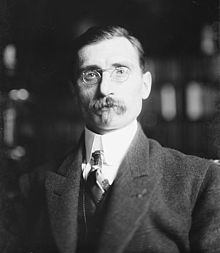Name Guglielmo Ferrero Role Historian | ||
 | ||
Died August 3, 1942, Mont Pelerin, Chardonne, Switzerland Books The women of the Caes, Greatness and Decline o, Characters and Events of Roman, Militarism, Between the old world and Similar People Cesare Lombroso, William Rappard, Archibald Sinclair - 1st Viscount | ||
Nominations Nobel Prize in Literature | ||
Guglielmo Ferrero
Guglielmo Ferrero ([ɡuʎˈʎelmo ferˈreːro]; July 21, 1871 — August 3, 1942) was an Italian historian, journalist and novelist, author of the Greatness and Decline of Rome (5 volumes, published after English translation 1907–1909). Ferrero devoted his writings to classical liberalism and he opposed any kind of dictatorship and Big Government. He was nominated for the Nobel Prize in Literature twenty times in six years.
Contents
Biography
Born in Portici, near Naples, Ferrero studied law in Pisa, Bologna and Turin. Soon afterward he married Gina Lombroso, a daughter of Cesare Lombroso, the criminologist and psychiatrist with whom he wrote The Female Offender, The Prostitute and The Normal Woman. In 1891-1894 Ferrero traveled extensively in Europe and in 1897 wrote The Young Europe, a book which had a strong influence over James Joyce.
After studying the history of Rome Ferrero turned to political essays and novels (Between Two Worlds in 1913, Speeches to the Deaf in 1925 and The Two Truths in 1933-1939). When the fascist reign of Black Shirts forced liberal intellectuals to leave Italy in 1925, Ferrero refused and was placed under house arrest. In 1929 Ferrero accepted a professorship at the Graduate Institute of International Studies in Geneva. His last works (Adventure, Bonaparte in Italy, The Reconstruction of Europe, The Principles of Power and The Two French Revolutions) were dedicated to the French Revolution and Napoleon. In 1935 his daughter Nina Ferrero married the Yugoslavian diplomat Bogdan Raditsa.
Ferrero was invited to the White House by Theodore Roosevelt in 1908. He gave lectures in the northeast of the USA which were collected and published in 1909 as Characters and Events of Roman History. Additionally, Theodore Roosevelt read "The Greatness and Decline of Rome".
He died in 1942 at the Mont Pèlerin, Switzerland.
Works in English translation
Selected articles
